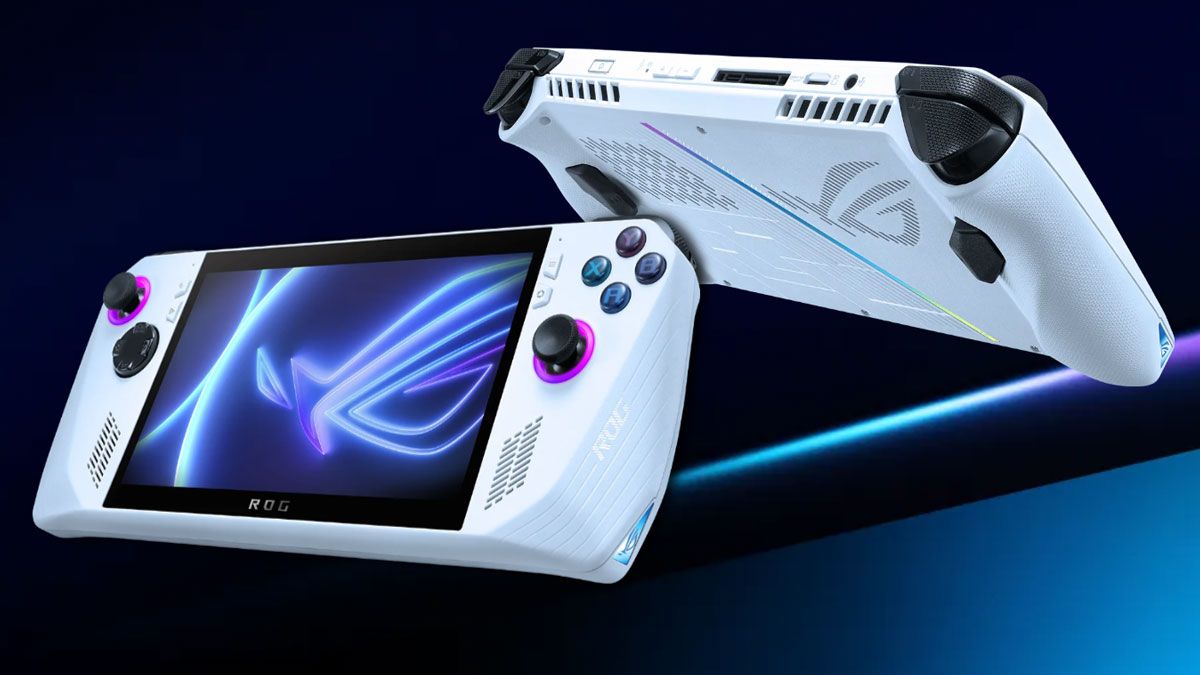Image: ROG Ally
How does the Steam Deck measure up against its latest competitor: the ROG Ally? Here’s a breakdown of their specs.
ASUS’ brand-new handheld gaming PC the ROG Ally has revealed its pricing and release date, but the question remains: how does it fare against Valve’s Steam Deck? We only have both devices’ technical specifications and a handful of early impressions from the media to go on, but as it stands, the ROG Ally seems to be a slight upgrade from the Steam Deck's most expensive variant.
First off, let's compare specs. Since the Steam Deck has a few variations, we're going with the fully maxed-out 512GB Steam Deck against the 512GB ROG Ally that's available at launch:
ROG Ally vs Steam Deck tech specs
|
ROG Ally |
Steam Deck | |
|
Operating System |
Windows 11 Home |
SteamOS |
|
CPU |
AMD Ryzen Z1 Extreme Processor: Zen 4 architecture, 8-core/16-thread (up to 5.1 GHz boost) |
Zen 2 4c/8t, 2.4-3.5GHz (up to 448 GFlops FP32) |
|
GPU |
RDNA 3: 12 CUs up to 2.7 GHz (8.6 TFlops, 4GB VRAM) |
8 RDNA 2 CUs, 1.0-1.6GHz (up to 1.6 TFlops FP32) |
|
APU Power Draw |
9 to 30 Watts |
4-15W |
|
Display |
7-inch IPS panel (Glossy finish, 500 nits peak brightness, 7ms response time, touch screen) |
7-inch IPS LCD, 400 nits brightness, touch screen |
|
Resolution |
1920x1080 @ 120 Hz refresh rate (AMD FreeSync Premium) |
1280 x 800 pixels resolution (16:10 aspect ratio) @60Hz |
|
Memory |
16 GB dual-channel LPDDR5 RAM (6400 MT/s) |
16 GB LPDDR5 on-board RAM (5500 MT/s quad 32-bit channels) |
|
Storage |
512 GB NVMe m.2 SSD |
512 GB high-speed NVMe SSD (PCIe Gen 3 x4 [All models include high-speed microSD card slot] |
|
Ports |
3.5mm audio jack, USB-C 3.2 Gen 2 combo port with DisplayPort 1.4 support, UHS-II microSD card reader |
3.5mm stereo headphone / headset jack, USB-C with DisplayPort 1.4, USB 3.2 Gen 2, UHS-I microSD card reader |
|
Battery |
40 WHrs |
40 WHrs |
|
Power Supply |
65W USB-C PD 3.0 power supply |
45W USB Type-C PD3.0 power supply |
|
Weight |
608 grams / 1.34 lbs |
Approx. 669 grams |
|
Price |
$699 |
$649 |
One difference that might not come to mind right away is that the ROG Ally also supports more games, considering that it runs on Windows 11 compared to the Steam Deck, which uses Proton to get games running on the Steam OS. The ROG Ally jumps through fewer hoops, but also lacks the customised software that might attract users to the Steam Deck in the first place. As long as you don’t mind feeling like you’re just using a smaller laptop, it shouldn’t be an issue.
Another missing feature in the ROG Ally are the Steam Deck’s trackpads. Users are divided on these pressure-sensitive touchpads, with some arguing that they make playing PC games better while handheld, and others arguing that they’re unnecessary. It’s all up to personal preference. Specs-wise, the ROG Ally does rise slightly above the Steam Deck for the additional $50 it’s asking for. It’s not worth the upgrade from the Steam Deck if you already have one, but it’s worth considering if you don’t.
We won’t know exactly how the ROG Ally measures up until we get our hands on it personally, but it’s certainly an exciting time for the handheld gaming PC market right now.







